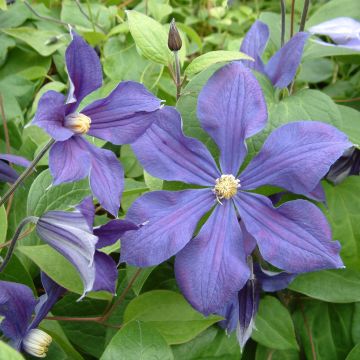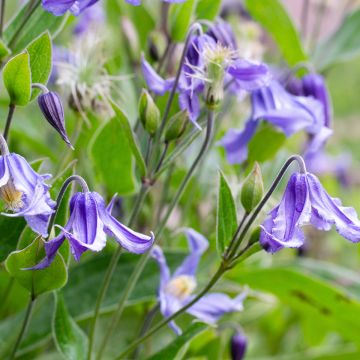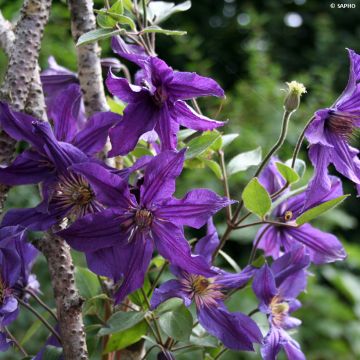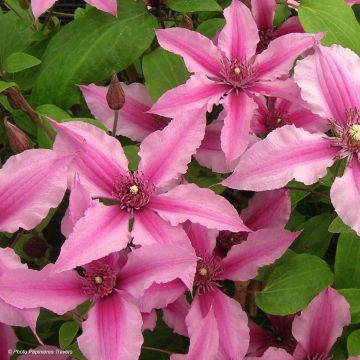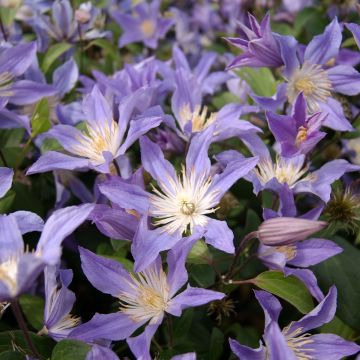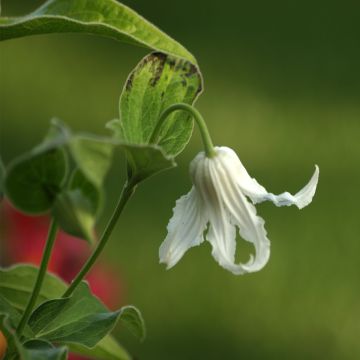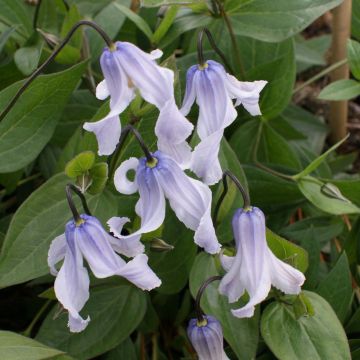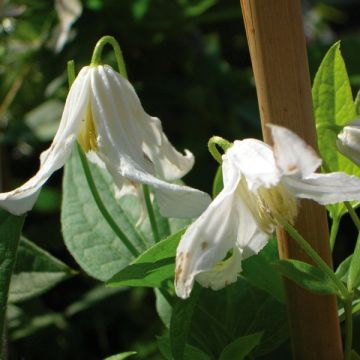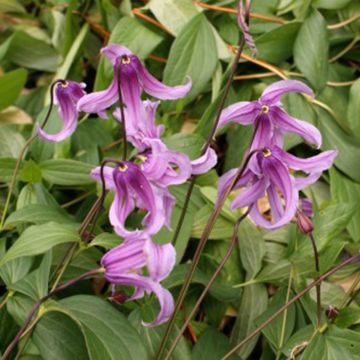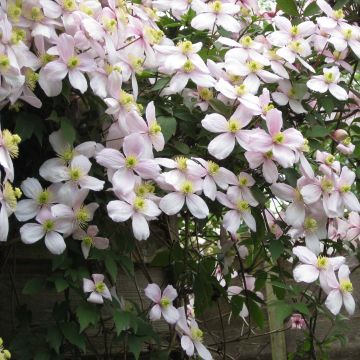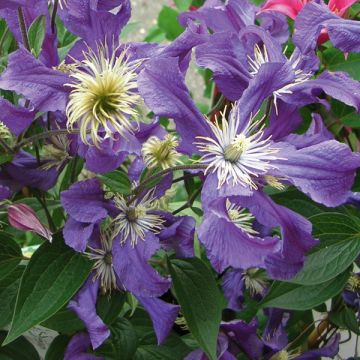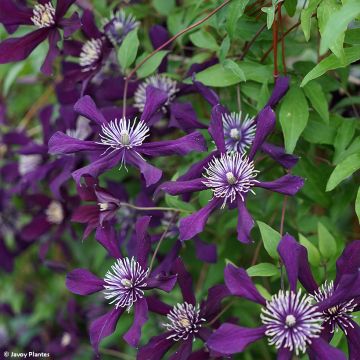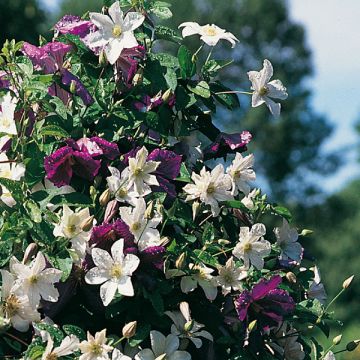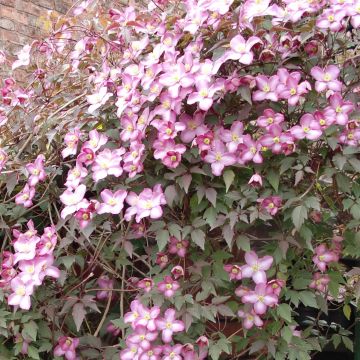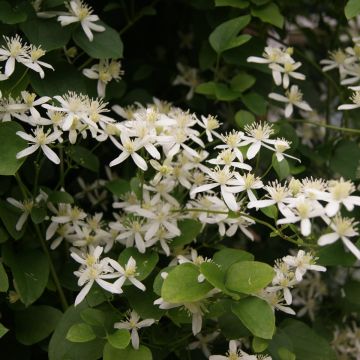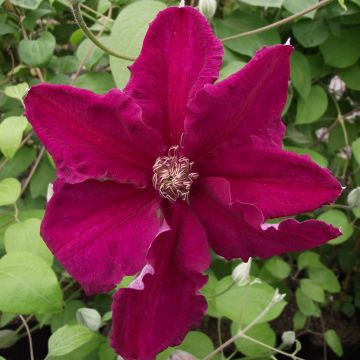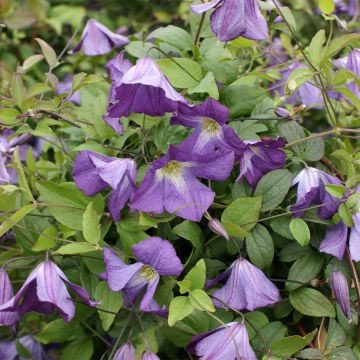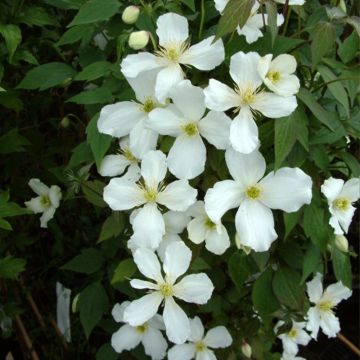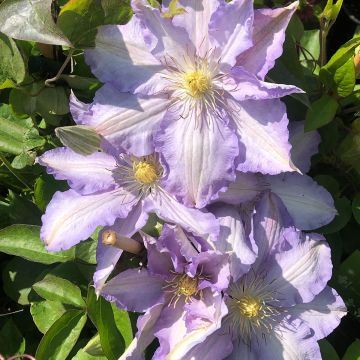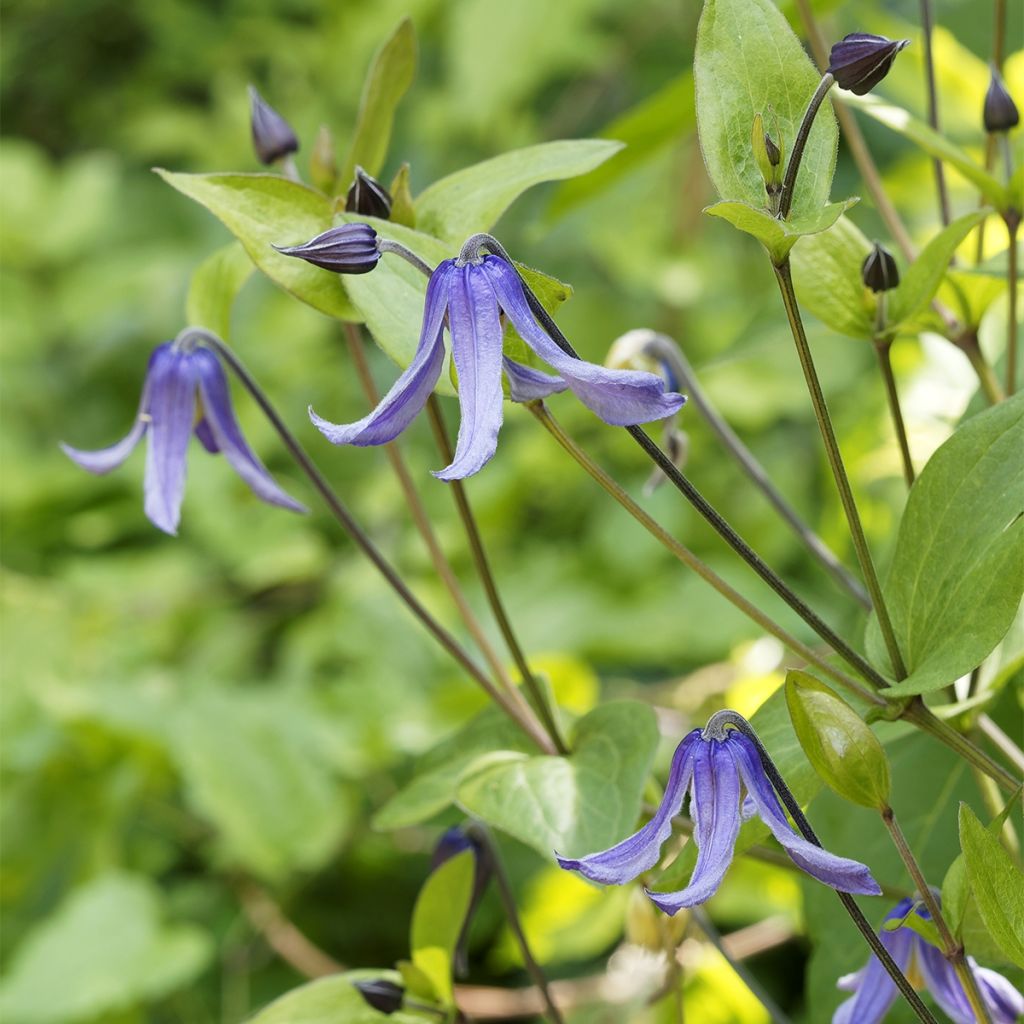

Clematis Blue Boy
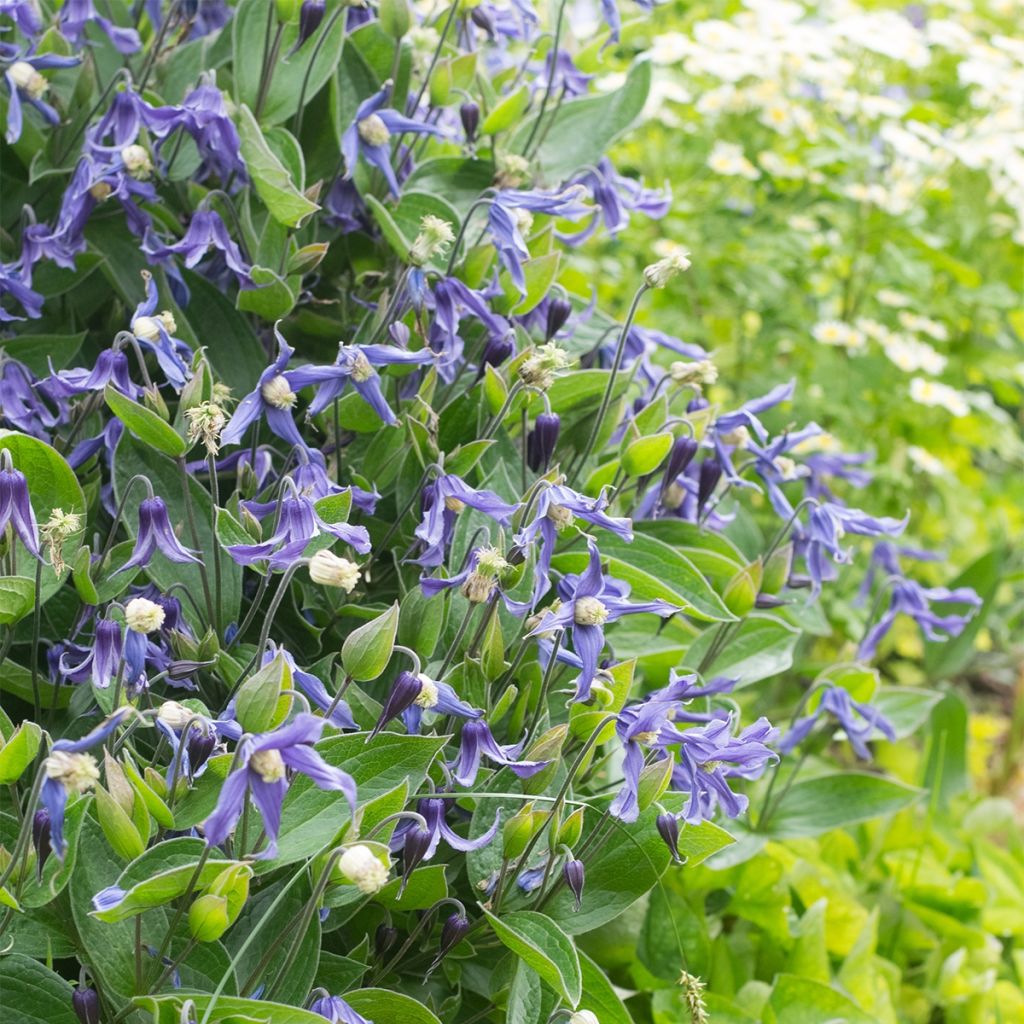

Clematis Blue Boy
Clematis Blue Boy
Clematis integrifolia x viticella Blue Boy
This item cannot be shipped to the selected country
Delivery charge from €5.90
More information
Schedule delivery date,
and select date in basket
This plant carries a 6 months recovery warranty
More information
We guarantee the quality of our plants for a full growing cycle, and will replace at our expense any plant that fails to recover under normal climatic and planting conditions.
From €5.90 for pickup delivery and €6.90 for home delivery
Express home delivery from €8.90.
Does this plant fit my garden?
Set up your Plantfit profile →
Description
Clematis 'Blue Boy' is a beautiful semi-climbing hybrid variety, adorned with hundreds of gracefully pendulous bell-shaped flowers that are both light and bright. They bloom in abundance in spring, and more sporadically during summer if the soil remains slightly moist. With its natural appearance, this clematis displays delicate foliage that perfectly complements its blue-mauve flowering. Its modest size and easy cultivation make it an ideal plant for container gardening, as well as an excellent companion for roses.
The genus Clematis belongs to the Ranunculaceae family. Clematis 'Blue Boy' is a horticultural creation from 1947 by Frank L. Skinner, born in Canada. This remarkable variety is the result of cross-breeding between C. integrifolia and C. viticella.
'Blue Boy' is a low-climbing perennial plant with long leafy stems reaching a length of 1.8m (6ft). The overall habit forms a slightly bushy clump about 1.2m (4ft) in height, with a similar spread. Slow to establish, the plant deeply roots itself in the soil before showing more vigorous growth in subsequent years. Each spring, numerous stems emerge from its base, bearing small leaves divided into 3 ovate to elliptical leaflets in a deep green colour. The flowers bloom abundantly in May-June, and then more sporadically throughout summer amidst the foliage. Light pruning after the first wave of flowers encourages renewed flowering, although the flowers are often smaller. They are semi-campanulate in shape and somewhat pendulous, composed of 4 slightly recurved, twisted, and undulate petals. At full bloom, they measure about 6cm (2in) in diameter and display cream-coloured stamens in their throat. The colour of the flowers is a fairly light blue with mauve and grey undertones. This clematis prefers sunny but not scorching locations.
Plant Clematis 'Blue Boy' alongside roses to accompany their flowering and fill in their bare base. Clematis represents a genus rich in diversity, with flowers of all colours, shapes, and sizes. Take advantage of their easy cultivation to give your garden a romantic and bohemian touch. The exquisite and robust Clematis 'Blue Boy' will thrive perfectly in a pot on a balcony or on a bank filled with perennial peas, variegated ivy, small-flowered periwinkles, coreopsis, and euphorbias.
Report an error about the product description
Plant habit
Flowering
Foliage
Botanical data
Clematis
integrifolia x viticella
Blue Boy
Ranunculaceae
Cultivar or hybrid
Other Clematis Integrifolia
Planting and care
Clematis 'Blue Boy' prefers humus-rich, moist but well-drained soils. It can tolerate any properly loosened and relatively deep garden soil that is not too dry in summer. This plant can withstand short periods of drought, but lack of water will diminish flowering. It prefers partial shade and requires plenty of light to flower properly. However, this plant dreads direct and scorching sunlight, especially in hot regions. Sometimes slow to establish, it deeply roots before taking off. It is a trouble-free and long-lasting plant. It should be pruned very short every year at the end of winter.
Planting period
Intended location
Care
This item has not been reviewed yet - be the first to leave a review about it.
Clematis
Haven't found what you were looking for?
Hardiness is the lowest winter temperature a plant can endure without suffering serious damage or even dying. However, hardiness is affected by location (a sheltered area, such as a patio), protection (winter cover) and soil type (hardiness is improved by well-drained soil).

Photo Sharing Terms & Conditions
In order to encourage gardeners to interact and share their experiences, Promesse de fleurs offers various media enabling content to be uploaded onto its Site - in particular via the ‘Photo sharing’ module.
The User agrees to refrain from:
- Posting any content that is illegal, prejudicial, insulting, racist, inciteful to hatred, revisionist, contrary to public decency, that infringes on privacy or on the privacy rights of third parties, in particular the publicity rights of persons and goods, intellectual property rights, or the right to privacy.
- Submitting content on behalf of a third party;
- Impersonate the identity of a third party and/or publish any personal information about a third party;
In general, the User undertakes to refrain from any unethical behaviour.
All Content (in particular text, comments, files, images, photos, videos, creative works, etc.), which may be subject to property or intellectual property rights, image or other private rights, shall remain the property of the User, subject to the limited rights granted by the terms of the licence granted by Promesse de fleurs as stated below. Users are at liberty to publish or not to publish such Content on the Site, notably via the ‘Photo Sharing’ facility, and accept that this Content shall be made public and freely accessible, notably on the Internet.
Users further acknowledge, undertake to have ,and guarantee that they hold all necessary rights and permissions to publish such material on the Site, in particular with regard to the legislation in force pertaining to any privacy, property, intellectual property, image, or contractual rights, or rights of any other nature. By publishing such Content on the Site, Users acknowledge accepting full liability as publishers of the Content within the meaning of the law, and grant Promesse de fleurs, free of charge, an inclusive, worldwide licence for the said Content for the entire duration of its publication, including all reproduction, representation, up/downloading, displaying, performing, transmission, and storage rights.
Users also grant permission for their name to be linked to the Content and accept that this link may not always be made available.
By engaging in posting material, Users consent to their Content becoming automatically accessible on the Internet, in particular on other sites and/or blogs and/or web pages of the Promesse de fleurs site, including in particular social pages and the Promesse de fleurs catalogue.
Users may secure the removal of entrusted content free of charge by issuing a simple request via our contact form.
The flowering period indicated on our website applies to countries and regions located in USDA zone 8 (France, the United Kingdom, Ireland, the Netherlands, etc.)
It will vary according to where you live:
- In zones 9 to 10 (Italy, Spain, Greece, etc.), flowering will occur about 2 to 4 weeks earlier.
- In zones 6 to 7 (Germany, Poland, Slovenia, and lower mountainous regions), flowering will be delayed by 2 to 3 weeks.
- In zone 5 (Central Europe, Scandinavia), blooming will be delayed by 3 to 5 weeks.
In temperate climates, pruning of spring-flowering shrubs (forsythia, spireas, etc.) should be done just after flowering.
Pruning of summer-flowering shrubs (Indian Lilac, Perovskia, etc.) can be done in winter or spring.
In cold regions as well as with frost-sensitive plants, avoid pruning too early when severe frosts may still occur.
The planting period indicated on our website applies to countries and regions located in USDA zone 8 (France, United Kingdom, Ireland, Netherlands).
It will vary according to where you live:
- In Mediterranean zones (Marseille, Madrid, Milan, etc.), autumn and winter are the best planting periods.
- In continental zones (Strasbourg, Munich, Vienna, etc.), delay planting by 2 to 3 weeks in spring and bring it forward by 2 to 4 weeks in autumn.
- In mountainous regions (the Alps, Pyrenees, Carpathians, etc.), it is best to plant in late spring (May-June) or late summer (August-September).
The harvesting period indicated on our website applies to countries and regions in USDA zone 8 (France, England, Ireland, the Netherlands).
In colder areas (Scandinavia, Poland, Austria...) fruit and vegetable harvests are likely to be delayed by 3-4 weeks.
In warmer areas (Italy, Spain, Greece, etc.), harvesting will probably take place earlier, depending on weather conditions.
The sowing periods indicated on our website apply to countries and regions within USDA Zone 8 (France, UK, Ireland, Netherlands).
In colder areas (Scandinavia, Poland, Austria...), delay any outdoor sowing by 3-4 weeks, or sow under glass.
In warmer climes (Italy, Spain, Greece, etc.), bring outdoor sowing forward by a few weeks.

































